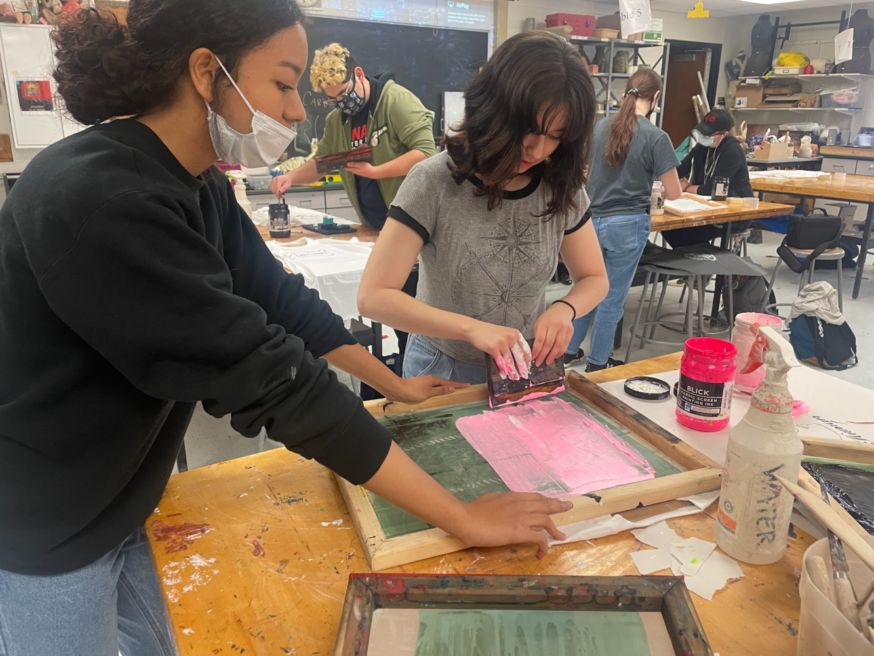Classes to know: Art in Contemporary Society

Art in Contemporary Society students screen print for a class project. Photo courtesy of Luke Jenner.
Every year, students are tasked with the difficult choice of selecting their electives for the upcoming school year. With a large variety of electives spanning over several different departments, narrowing options down to a mere 2-3 classes can seem next to impossible. Many students opt for something they are familiar with, while others might try a class completely out of their comfort zone. In this frantic choosing of electives, some classes commonly get overlooked. In order to shed light on some of these overlooked classes and make the elective picking process easier, the Conant Crier will periodically cover different electives that don’t get the attention they deserve.
One such elective is Art in Contemporary Society, a one-semester, dual credit course that falls under the Art and Media Department. The class examines the role that dance, drama, music, and the visual arts play in society. Through a dual credit class, students earn college credit without needing to take an end-of-year test, like would be required in an AP class. This class does not require any prior experience and is currently taught by Conant art teacher Luke Jenner.
Jenner describes Art in Contemporary Society as “a class of art appreciation where students examine art and media in our lives today.”
This class is an opportunity for students to learn more about art, whether that means expanding on prior knowledge or learning things that are completely new.
“Anyone that is interested in talking about how art, music, or design affect our lives today would enjoy taking this class,” Jenner said.
Students take on a variety of projects, which allow them to look at modern art through a unique lens. Through discussion, critique, and interpretation of the arts, students explore the relationship between contemporary and historical events.
Jenner’s favorite unit, intersectionality, focuses on the often overlooked “why?” behind art. Intersectionality refers to overlaps in different aspects of a person’s identity, such as race, religion, and gender, and how they join together. In this unit, students learn about how these identities cause people to both relate to, and feel alienated from, others. For instance, two people may share an interest, but their unique overlaps may cause them to have completely different experiences with that interest. In order to explore this topic, students will each create a project about the layers of their own intersectionality.

Jenner and students on a field trip to the Museum of Contemporary Art in Chicago. Photo courtesy of Luke Jenner.
Additionally, this year the class took a field trip to the Museum of Contemporary Art in Chicago. Here, students visited an exhibit by Nick Cave, best known for his bright and whimsical 3-D sculptures.
“We had to find a piece we liked, and we used the elements and principles [of design] to describe and break down the piece to interpret a meaning,” Evalyn Nowak, ‘25, a current Art in Contemporary Society student, said.
“I didn’t have a class like this at my high school, but I wish that there was,“ Jenner said. He encourages students to take advantage of this opportunity where they could potentially uncover a passion for art.
“My biggest takeaway from this class has been a greater appreciation for art. I now understand how much effort and meaning are put into a piece of art in addition to the ‘how’ and ‘why’ behind it,” Nowak said.




Recent Comments